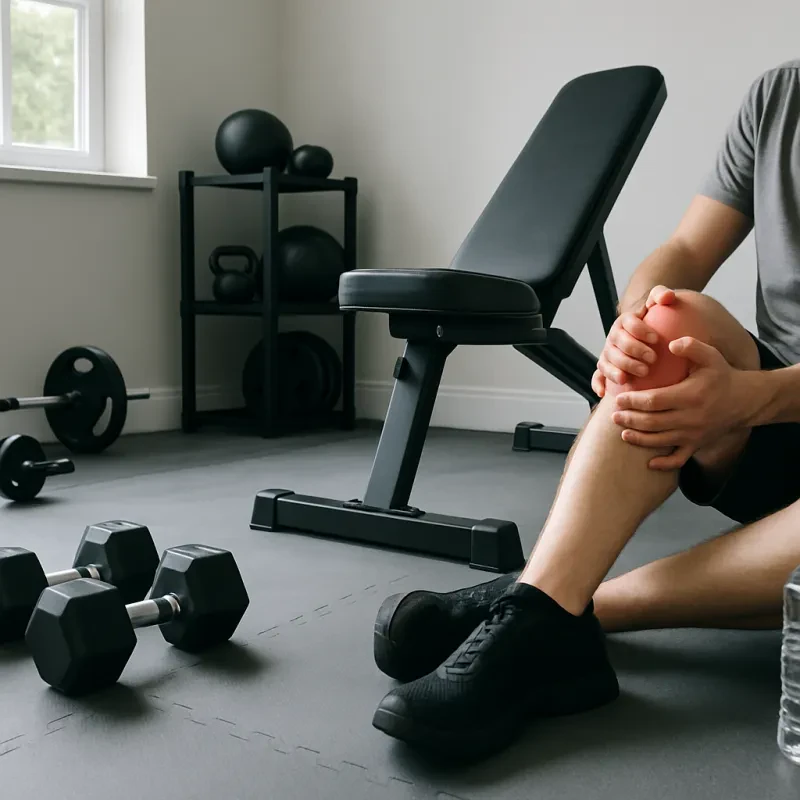💡 Why Back Pain Relief Starts with Movement
Back pain affects millions of people worldwide, and for many, it starts at home, with long hours of sitting, poor posture, and little movement. Whether your discomfort comes from muscle strain, a herniated disc, or a sedentary lifestyle, the right home fitness routine for back pain can help relieve tension and strengthen the muscles that support your spine.
You don’t need a gym membership or fancy equipment to feel better. With simple, consistent back pain relief exercises at home, you can manage discomfort naturally, improve flexibility, and protect your spine long-term.
✅ Why Exercise Matters for Lower Back Pain
Regular movement and stretching are essential for maintaining a healthy spine. Done correctly, home workouts can:
-
Strengthen core and lower back muscles
-
Improve mobility and spinal flexibility
-
Reduce stiffness and muscle tension
-
Support posture and alignment
-
Prevent recurring back injuries
-
Aid in long-term pain relief and posture correction
🏠 Best Back Pain Relief Exercises to Do at Home
Here are 8 simple yet powerful exercises you can include in your home routine to reduce back pain and improve posture.
1. Cat-Cow Stretch – Improve Spine Mobility
A gentle movement that increases flexibility in the spine and reduces tension.
How to do it:
-
Get on all fours, hands under shoulders, knees under hips
-
Inhale and arch your back (Cow Pose)
-
Exhale and round your spine (Cat Pose)
-
Repeat slowly for 8–10 reps
2. Child’s Pose – Stretch and Relax the Lower Back
Perfect for gently stretching the spine and releasing tight muscles.
How to do it:
-
Kneel down and sit back on your heels
-
Reach your arms forward and lower your chest to the ground
-
Breathe deeply and hold for 30 seconds
3. Pelvic Tilts – Activate Core and Support Lower Back
Strengthens the abdominal area to reduce pressure on the lower spine.
How to do it:
-
Lie on your back, knees bent, feet flat
-
Tighten your abs and press your lower back into the floor
-
Hold briefly, then relax
-
Repeat 10–12 times
4. Bridge Exercise – Build Glute and Back Strength
Targets the glutes and lower back muscles, promoting better spinal support.
How to do it:
-
Lie on your back with knees bent
-
Push your hips upward, squeezing your glutes
-
Hold for 5 seconds, then lower slowly
-
Perform 10–15 reps
5. Seated Spinal Twist – Boost Flexibility and Alignment
Improves rotation in the spine and helps relieve tightness in the mid-back.
How to do it:
-
Sit on the floor, legs extended
-
Cross one foot over the opposite thigh
-
Place the opposite elbow outside the knee and gently twist
-
Hold for 20–30 seconds and switch sides
6. Knee-to-Chest Stretch – Relieve Lower Back Pressure
Helps decompress the lumbar spine and improve alignment.
How to do it:
-
Lie flat on your back
-
Bring one knee toward your chest
-
Keep the other foot on the ground
-
Hold for 20–30 seconds and switch legs
7. Cobra Stretch (Lumbar Extension) – Ease Sciatica and Tightness
Stretches the lower spine and strengthens back extensors.
How to do it:
-
Lie on your stomach with hands under shoulders
-
Press your chest up while keeping hips grounded
-
Hold for 10–15 seconds, then lower
-
Repeat 5–8 times
8. Bird-Dog Exercise – Build Core Stability and Balance
Improves coordination, core engagement, and spinal alignment.
How to do it:
-
Begin on all fours
-
Extend your right arm and left leg at the same time
-
Hold briefly, return to start, and switch sides
-
Perform 10 reps on each side
🛡️ Tips for Safe Home Back Workouts
To avoid aggravating your condition, keep these tips in mind:
-
Always warm up before exercising
-
Move slowly and with control
-
Avoid jerky or high-impact movements
-
If a movement increases pain, stop immediately
-
Stay consistent, long-term relief requires regular effort
🚨 When to See a Professional for Back Pain
While home exercises can work wonders, some signs require medical attention. Seek help if you experience:
-
Severe, persistent lower back pain
-
Pain that radiates down your legs (possible sciatica)
-
Numbness or tingling in the feet
-
Loss of bladder or bowel control
In these cases, consult a doctor or physical therapist before continuing your routine.
🧘 Strengthen Your Back Naturally at Home
Back pain doesn't have to be a life sentence. With the right at-home exercises, you can relieve tension, restore mobility, and strengthen your core without any gym equipment.
Whether you're dealing with tightness from sitting too much, recovering from a herniated disc, or simply trying to move better, these natural back pain relief exercises offer a simple, effective solution.



